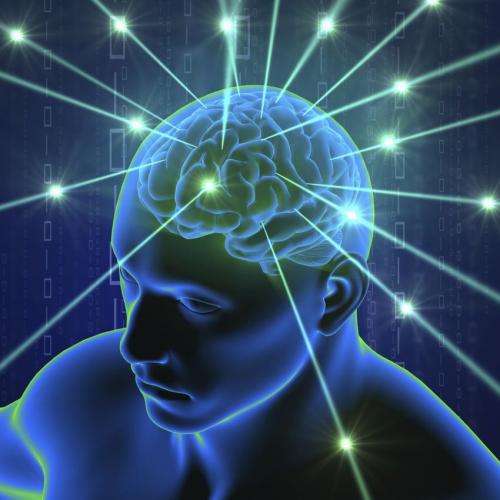September 21, 2015 report
Audiovisual integration in musicians

(Medical Xpress)—The study of brain plasticity and how brain structures are integrated into functioning network structures keeps leading researchers to musicians. Musicians, particularly those who have learned to read music, have acquired expertise in a skill set that integrates multiple sensory inputs. Research has established that the study of music trains multiple brain structures to form new networks and also changes the physiology of the brain.
So musicians are ideal subjects for various kinds of brain studies. A new study reported in the Proceedings of the National Academy of Sciences recently addressed how audio and visual stimuli are integrated in the brain via magnetoencephalographic (MEG) recordings. A multinational group of researchers collaborated to compare the cortical large-scale functional networks of musicians and non-musicians to see how they analyzed incongruent sources of information.
Multisensory integration is important for understanding and navigating the world. Classic modular models are yielding to network models as researchers find more widespread areas of the brain engaged with integrating a variety of inputs. To compare the cortical networks of the test subjects, the researchers prepared congruent and incongruent stimuli by combining melodies of five tones each with images that represented the pitch height of each tone with disks of varying heights. The images were combined with the melodies according to the rule "the higher the pitch, the higher the position of the disk." Eight different trials of five-tone melodies and five images were prepared for each condition, congruent and incongruent.
The MEG data revealed that nonmusicians rely heavily on the processing of corresponding visual clues in order to integrate audiovisual information; musicians, by contrast, showed greater connectivity in regions associated with the identification of auditory information. Additionally, the brains of the musicians demonstrated enhanced processing efficiency, and the researchers conclude that music training—specifically music reading—and prior experience confer a behavioral benefit.
The authors write, "The comparison of the networks used by musicians and non-musicians reveals significant differences in the connectivity of the temporal sources with precentral and frontal ones. This result seems to depict the audiovisual-motoric binding that musicians have highly trained to read musical scores and to play their instrument." This points to how musical training shapes the integrative audiotactile response.
They note that the brains of musicians employ a large-scale cortical network to identify audiovisual incongruences, which resembles the network used by nonmusicians to identify congruent sources, but is more strongly lateralized to the right brain hemisphere."The organization of this network indicates that musicians make greater use of the temporal sources (and auditory information accordingly)," the authors write.
The musicians showed enhanced density and processing efficiency within this network by comparison with the non-musicians. Interestingly, the researchers found that the musicians also have enhanced gray matter density and enhanced connectivity in the regions studied. They conclude that large-scale functional connectivity underlying multisensory integration becomes reorganized with training, illuminating the brain networks engaged with integrating multiple sensory inputs while also adding to the growing evidence for lifelong brain plasticity.
More information: "Musical expertise is related to altered functional connectivity during audiovisual integration." PNAS 2015 ; published ahead of print September 14, 2015, DOI: 10.1073/pnas.1510662112
Abstract
The present study investigated the cortical large-scale functional network underpinning audiovisual integration via magnetoencephalographic recordings. The reorganization of this network related to long-term musical training was investigated by comparing musicians to nonmusicians. Connectivity was calculated on the basis of the estimated mutual information of the sources' activity, and the corresponding networks were statistically compared. Nonmusicians' results indicated that the cortical network associated with audiovisual integration supports visuospatial processing and attentional shifting, whereas a sparser network, related to spatial awareness supports the identification of audiovisual incongruences. In contrast, musicians' results showed enhanced connectivity in regions related to the identification of auditory pattern violations. Hence, nonmusicians rely on the processing of visual clues for the integration of audiovisual information, whereas musicians rely mostly on the corresponding auditory information. The large-scale cortical network underpinning multisensory integration is reorganized due to expertise in a cognitive domain that largely involves audiovisual integration, indicating long-term training-related neuroplasticity.
© 2015 Medical Xpress


















